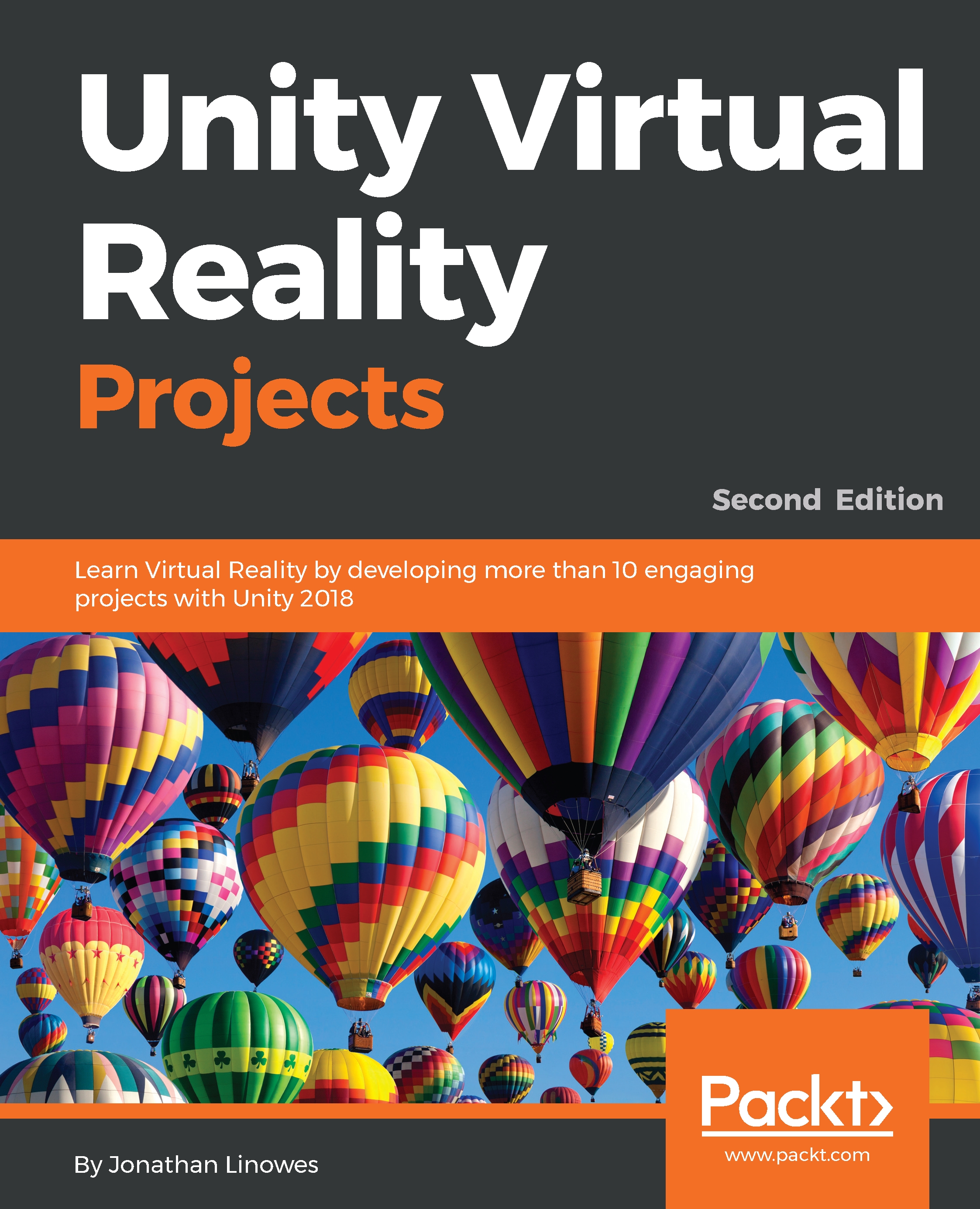To make the scene run as multiplayer, we need at a minimum a Network Manager component and we need to identify any objects that will get spawned using the Network Identity component.
-
Book Overview & Buying

-
Table Of Contents

Unity Virtual Reality Projects - Second Edition
By :

Unity Virtual Reality Projects
By:
Overview of this book
Unity has become the leading platform for building virtual reality games, applications, and experiences for this new generation of consumer VR devices.
Unity Virtual Reality Projects walks you through a series of hands-on tutorials and in-depth discussions on using the Unity game engine to develop VR applications. With its practical and project-based approach, this book will get you up to speed with the specifics of VR development in Unity. You will learn how to use Unity to develop VR applications that can be experienced with devices such as Oculus, Daydream, and Vive. Among the many topics and projects, you will explore gaze-based versus hand-controller input, world space UI canvases, locomotion and teleportation, software design patterns, 360-degree media, timeline animation, and multiplayer networking. You will learn about the Unity 3D game engine via the interactive Unity Editor, and you will also learn about C# programming. By the end of the book, you will be fully equipped to develop rich, interactive VR experiences using Unity.
Table of Contents (15 chapters)
Preface
 Free Chapter
Free Chapter
Virtually Everything for Everyone
Content, Objects, and Scale
VR Build and Run
Gaze-Based Control
Handy Interactables
World Space UI
Locomotion and Comfort
Playing with Physics and Fire
Exploring Interactive Spaces
Using All 360 Degrees
Animation and VR Storytelling
Social VR Metaverse
Optimizing for Performance and Comfort
Other Books You May Enjoy

